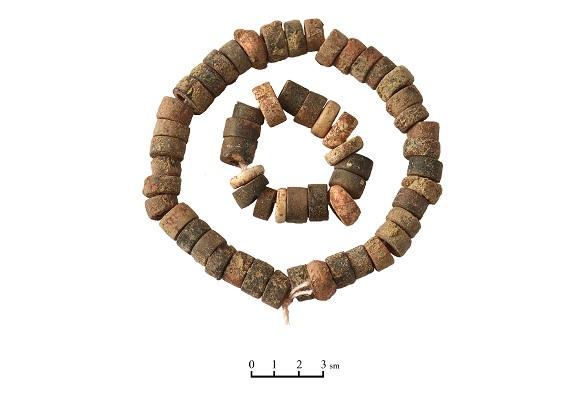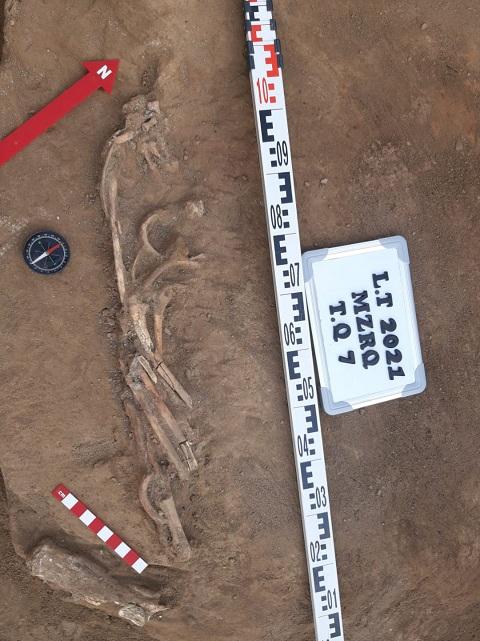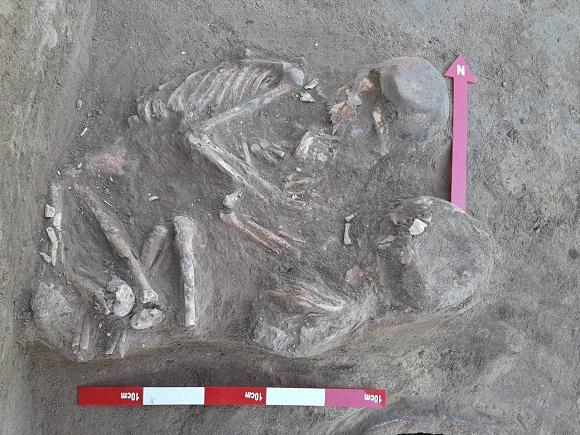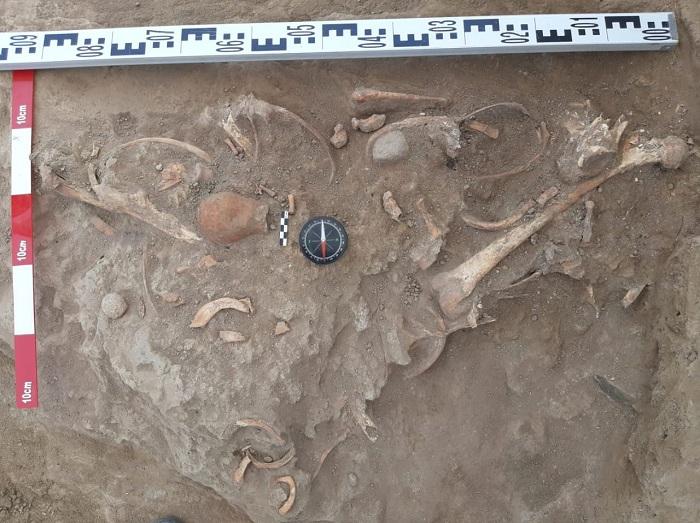Azerbaijani archaeologists discover new Neolithic settlement
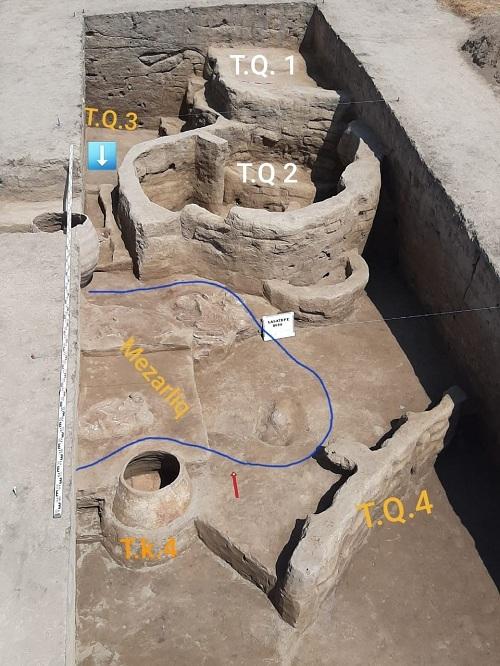
By Vugar Khalilov
Azerbaijani archaeologists have discovered a new Neolithic human settlement near the Horadiz city of the liberated Fuzuli region, Azerbaijan National Academy of Sciences (ANAS) reported on August 23.
The historical monument is located in the Lalatapa area, which was liberated from Armenian occupation during the April battles of 2016.
The archaeological research was conducted by the "Karabakh Neolithic-Eneolithic Expedition" led by the researcher of the Institute of Archaeology and Ethnography of ANAS, Khagani Almammedov.
The surface of the ancient hill-shaped settlement with a height of 6.4 m and an area of 0.9 ha was registered in 2019 and the archaeological excavations started in 2020 and have been continued this year, ANAS said.
The archaeologists have identified three remnants of raw brick buildings and a yard wall in a shape of oval, circular and rectangular during the excavations in four sites, which are 16 square meters large for each and date to the first half of the sixth millennium BC, the Academy reported.
A conical ziggurat made of raw bricks is located in the central part of the archaeological site. To the south, the researchers have discovered a circular building with a diameter of 3.3 meters and a height of 1.5-2 meters that was used for housing.
Moreover, three floors of a demolished house, which was plastered with the mud-ochre mixture, were identified at different levels. Several artefacts such as household jugs, tools made of stone and bone, the remains of a hearth and a child’s skeleton has been unearthed buried under the third floor of the building.
According to the archaeologists, the most distinguishing feature of the Lalatapa monument is its tomb. Although many Neolithic monuments in the South Caucasus have been found to contain human graves and mass burials in one grave (Menteshtapa, Tovuz region), this is the first time that people have been buried in a cemetery where certain rituals have been performed, ANAS commented.
Furthermore, about eight square meters of the cemetery, which expands to the south-west, has been cleared and eight graves have been found on three levels. Fourteen skeletons have been identified in the cleared graves, of which seven are believed to belong to infants (up to one year old), three to teenagers and four to adults.
The skeletons were buried in a special oval chamber. While each grave chamber was plastered with ochre mud, only one grave (grave № 4) was covered with a bast mat. In the graves, people were buried alone and in pairs, in a tightly wrapped position, in different directions. Pastry, malachite and stone beads, bone ornaments and a scepter have been discovered near the buried people.
Almammedov said that the samples taken from the skeletons found in the grave would be analysed by DNA analysis at the "Ancient DNA Laboratory" of Hacettepe University (Turkey) to study the genetic connections, hereditary and bacteriological diseases and diets of these people.
The DNA studies will be of particular importance in terms of studying the ethno-cultural changes that took place in Karabakh in the Neolithic period in general and the role of ethnic or cultural migration in the formation of early production relations, especially in the South Caucasus. At the same time, a radiocarbon dating of the monument will be conducted on the basis of these examples.
It should be noted that the Lalatapa settlement as a part of the Karabakh archaeological Neolithic culture is of great interest to world archaeology.
---
Follow us on Twitter @AzerNewsAz
Here we are to serve you with news right now. It does not cost much, but worth your attention.
Choose to support open, independent, quality journalism and subscribe on a monthly basis.
By subscribing to our online newspaper, you can have full digital access to all news, analysis, and much more.
You can also follow AzerNEWS on Twitter @AzerNewsAz or Facebook @AzerNewsNewspaper
Thank you!

